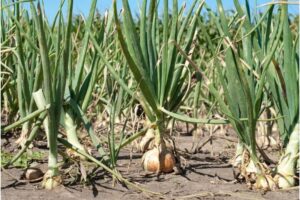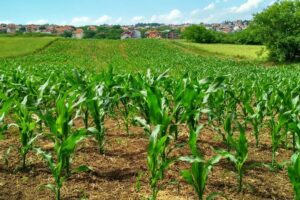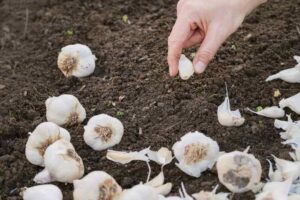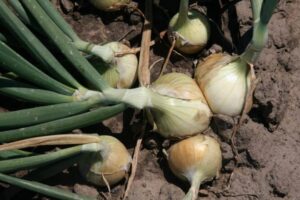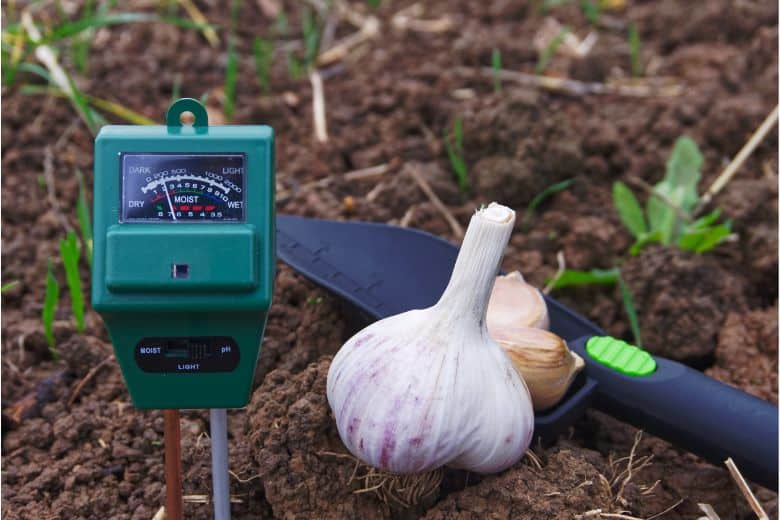
Gardening is a rewarding hobby, and garlic is an excellent choice for gardeners in Colorado due to its hardiness and adaptability. Garlic, a culinary staple, is not only delicious but also carries numerous health benefits. If you’re considering growing your own garlic in the Centennial State, you’ve come to the right place. In this guide, we will detail the steps on how to plant garlic in Colorado, providing you with an easy-to-follow roadmap to a bountiful harvest.
Detailed Information About Planting Garlic in Colorado
Garlic is a versatile crop that thrives in a variety of climates, and Colorado’s unique weather patterns make it a suitable place for growing this robust herb. With careful planning, preparation, and knowledge of Colorado’s diverse climate zones, growing garlic can be a successful endeavor.
In Colorado, garlic is typically planted in the fall, ideally between mid-September to late October. This allows the cloves to establish roots before the winter, enabling a head start for spring growth. The best garlic varieties for Colorado include ‘German White,’ ‘Spanish Roja,’ ‘Music,’ and ‘Russian Red.’
Preparing the Colorado Soil for Garlic Planting
Colorado’s soil can be quite diverse, ranging from sandy and well-draining in some areas to clay-heavy in others. Understanding and preparing your soil is critical for successful garlic growth.
Step 1: Test Your Soil
Begin with a soil test to understand the pH level and nutrient content of your soil. Garlic thrives best in neutral to slightly acidic soil, between 6.0 and 7.0 pH. You can purchase a soil testing kit from a local garden center or online.
Step 2: Amend Your Soil
Depending on the results of your soil test, you might need to amend your soil. If the soil is too acidic, add lime. If it’s too alkaline, add sulfur or composted leaves.
Regardless of pH, amending the soil with organic matter will benefit your garlic. Compost, well-rotted manure, or worm castings improve the soil’s fertility, structure, and water-holding capacity. These additions will provide the nutrients garlic needs to grow and enhance soil drainage – a key for garlic since it doesn’t do well in waterlogged conditions.
Step 3: Address Drainage
If you’re dealing with Colorado’s clay-heavy soil, drainage could be an issue. Garlic roots don’t like to be waterlogged. Adding organic matter can help, but for soils heavy in clay, you may also want to add some coarse sand or fine gravel to improve drainage.
Step 4: Prepare Your Planting Bed
Once you’ve amended your soil, prepare your bed for planting. Break up any large clumps of soil and remove any rocks or debris. Create a smooth, level surface for planting.
Storing the Garlic
Storing garlic is an important step in ensuring that your kitchen remains stocked with this flavorful and versatile herb. Properly stored garlic can last up to six months in a cool, dry place with little to no humidity.
To keep garlic fresh, store it in a mesh bag or a container with holes in it to allow air circulation. To keep it dry, wrap it in a paper towel or place it in an open container. It’s best to keep garlic away from direct sunlight as this can cause the cloves to sprout.
To further extend the shelf life, you can also store garlic in the refrigerator, however, this may make it slightly bitter. With these simple tips, you can ensure that your garlic is stored correctly and available whenever you need it!
A Detailed Step-by-Step Guide to Planting Garlic in Colorado
Stage 1: Acquire Seed Garlic
Firstly, you need to get your hands on some quality seed garlic. It’s advisable to buy from a reputable nursery or online seed distributor, ensuring the variety is suited to Colorado’s climate. You can choose from hardneck varieties such as ‘Spanish Roja,’ ‘German White,’ and ‘Music,’ or the softneck ‘Silver White.’
Stage 2: Prepare Your Soil
Make sure your soil is well-prepared before planting. It should be well-draining and rich in organic matter, with a pH between 6.0 and 7.0. If your soil is heavy clay, consider adding some organic compost and sand to improve its texture and drainage.
Stage 3: Break the Garlic Bulbs
Right before planting, carefully break apart the garlic bulbs into individual cloves. Do this gently to avoid damaging the base of the cloves, which is where the roots will sprout.
Stage 4: Plant the Garlic Cloves
Plant the cloves pointy end up, about 2 inches deep into the soil. The cloves should be spaced about 4-6 inches apart to allow for adequate growth. If you’re planting multiple rows, keep them approximately 10-12 inches apart.
Stage 5: Mulch the Beds
Once you’ve planted the cloves, cover the beds with about 4-6 inches of organic mulch like straw or shredded leaves. Mulching helps to insulate the garlic cloves from the freezing Colorado winter, conserves moisture, and prevents weed growth.
Stage 6: Care and Maintenance
In the spring, when the ground thaws, begin watering your garlic. Watering should be regular but ensure the soil doesn’t become waterlogged. A top dressing of high-nitrogen fertilizer can also be added to boost growth.
Stage 7: Harvesting
You’ll know it’s time to harvest your garlic when the lower leaves turn yellow, and the upper leaves are still green, typically between late June and July. Use a garden fork to gently lift the bulbs out of the ground, being careful not to bruise or damage them.
By following these steps, you can look forward to a hearty harvest of fresh, home-grown garlic right in Colorado. Happy gardening!]
Additional Tips
Pay attention to your local climate and adjust your planting times accordingly. In cooler, mountainous areas, plant your garlic a bit earlier. Also, consider rotating your crops to avoid potential issues with soil-borne diseases.
Harvesting the Garlic
Harvesting garlic is a fun and rewarding experience for any home gardener. It’s a great way to enjoy the fruits of your labor and bring the flavor of garlic into your kitchen.
The key to a successful garlic harvest lies in timing. You’ll want to wait until most of the leaves have turned yellow and the bulbs are starting to separate from the stalks.
Once you’ve identified that the garlic is ready to harvest, you can gently pull the bulbs from the soil and store them in a cool, dry place.
With proper care and maintenance, you can enjoy the flavor of your garlic harvest for months to come.
Maintaining the Garlic Plant in Colorado
Watering
Garlic needs a consistent supply of moisture, particularly during spring when it’s in its active growth phase. However, it’s important not to overwater as garlic doesn’t tolerate waterlogged conditions. Allow the topsoil to dry out between watering to prevent soggy conditions.
Fertilizing
Garlic is a heavy feeder and benefits from an application of a high-nitrogen organic fertilizer in the spring to support leaf production. Once the bulbs start forming (which is when the leaves stop growing), switch to a phosphorus-rich fertilizer to support bulb growth. Always follow the manufacturer’s instructions when applying fertilizers.
Weed Control
Keep the garlic bed free of weeds, which compete with the garlic plants for nutrients and water. Mulch can help suppress weed growth and should be maintained throughout the growing season.
Pest and Disease Management
Watch for signs of pests like thrips or diseases such as white rot or rust. Rotating your crops annually can help prevent the build-up of diseases in the soil.
Scaping (for hardneck varieties)
If you’re growing hardneck garlic varieties, you’ll notice a flowering stalk, called a scape, that starts to emerge from the center of the plant in late spring. It’s best to cut these scapes off once they have made one or two loops. This allows the plant to direct more energy into bulb growth. Plus, garlic scapes are edible and delicious!
Preparing for Harvest
As your garlic matures, typically in mid to late summer in Colorado, the lower leaves will begin to brown. When about half the leaves have browned, stop watering to allow the bulbs to dry out in preparation for harvest.
Regular care and maintenance of your garlic plants will ensure a successful and bountiful harvest. Good luck with your garlic growing journey!
FAQs About the How To Plant Garlic In Colorado
What is the best time of year to plant garlic in Colorado?
Answer: The best time of year to plant garlic in Colorado is in the fall, from late August to mid-October.
What type of soil should I use for planting garlic in Colorado?
Answer: For planting garlic in Colorado, it is best to use soil that is well-draining, rich in organic matter, and slightly acidic.
Does planting garlic in Colorado require any special care?
Answer: Yes, planting garlic in Colorado requires special care in order to ensure successful growth. This includes keeping the soil moist, providing the garlic with adequate sunlight, and mulching around the garlic plants to protect them from cold temperatures.
Do garlic plants need a lot of sun?
Answer: Garlic thrives in full sun, requiring at least 6-8 hours of direct sunlight each day.
When should I fertilize my garlic plants?
Answer: Apply a high-nitrogen organic fertilizer in the spring as the garlic starts actively growing.
Can I plant store-bought garlic?
Answer: While it’s possible, store-bought garlic often carries diseases and may not be suited to Colorado’s climate. It’s recommended to buy seed garlic from a reputable source.
Conclusion
Planting garlic in Colorado can be an easy and rewarding experience for any gardener. It is important to choose a variety of garlic that works best for the area, prepare the soil correctly, and have proper spacing when planting. With the right knowledge and care, garlic can thrive in Colorado and provide a great harvest.


